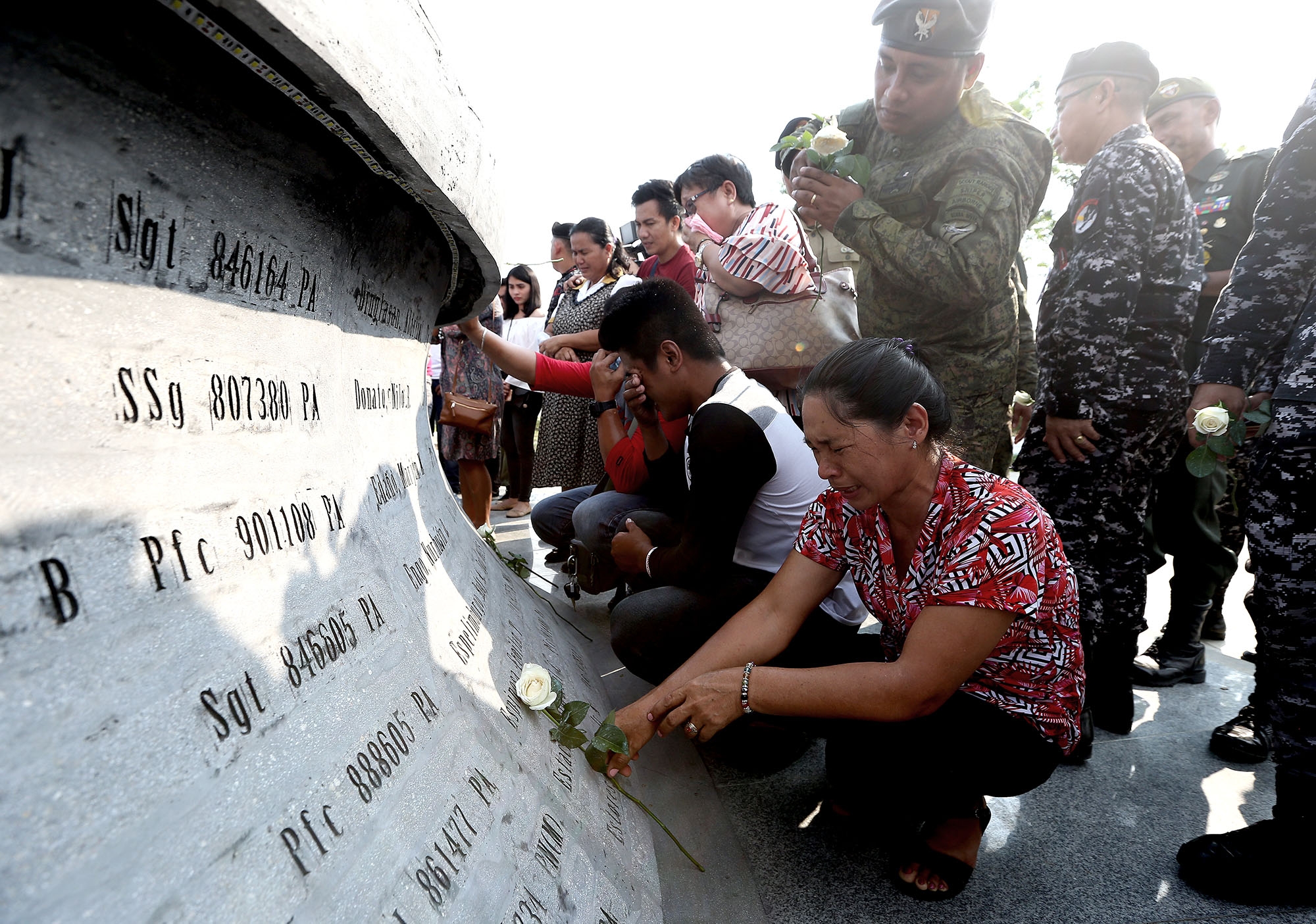Marawi 2 years later: Tears still flowing, resentment growing

Credit to Author: clopez| Date: Thu, 23 May 2019 21:38:07 +0000
MARAWI CITY — At the unveiling of a Muslim cemetery marker on Thursday, Norsalima Abdulrahman, tightly held on to a picture of her 6-year-old sister Sittia Ainah, who has been missing since militants inspired by the Islamic State (IS) laid siege to Marawi two years ago.
The 17-year-old girl joined hundreds of survivors and members of groups that aided them at the Maqbara public cemetery in Barangay Papandayan Caniogan where 282 unidentified bodies retrieved during and after the siege had been buried.
Abdulrahman said she attended the unveiling, hoping she could get updates on DNA test to help find her missing sister, brother and father.
When the fighting between government troops and the militants broke out around 2 p.m. on May 23, 2017, her father and siblings took refuge in the house of her uncle, Adman Rasuman.
Three hours later, her father, sister Sittia Ainah and brother Alinor returned to their house to get some personal belongings. They never came back.
“We were trapped (in Rasuman’s house) for three days,” Abdulrahman said.
Rasuman, her father’s cousin who accompanied her to the unveiling rites, said they later decided to evacuate to Cagayan de Oro City.
Only remembrance
Now, Abdulrahman’s only remembrance of her family is a small picture of her 6-year-old sister. Her father and mother separated years before the siege.
She said she had not lost hope of at least finding the remains of her siblings and father in the graves of the unknown victims.
“Since they’re family, even if I’m not sure they are here, I came,” Abdulrahman said.
Other survivors were impatient about the slow identification process.
“Until now this government never recognized the (need for) documentation of people and civilians who died during the siege,” said Abdul Atar, sultan of Marawi, in a message during the commemoration.
Several private groups helped those displaced by the fighting put up the commemorative marker inside the 2-hectare Maqbara public cemetery, 2 kilometers away from the center of the five-month gunbattle. Each grave was marked only with a piece of wood, painted white.
DNA tests
Secretary Eduardo del Rosario, chair of Task Force Bangon Marawi, said they would ask an agency under the Department of the Interior and Local Government about the status of the DNA tests, which would serve as basis for future claims of the relatives of the missing.
Marawi remains in ruins and experts are warning that the stalled reconstruction efforts are bolstering the appeal of extremist groups in the country’s south.
The delays have left about 100,000 residents in squalid relocation camps or sharing homes with relatives, feeding simmering anger among the displaced and providing a recruiting tool for extremists.
“The narratives (to join IS) used to be about the Middle East and the plight of Muslims around the world,” said Mouhammad Sharief, who cofounded a support group for Marawi’s youth.
“Now it’s closer to our hearts because the narrative is Marawi,” said 32-year-old Sharief, who was himself displaced by the fighting.
Risk can’t be ignored
An angry displaced population in Marawi is not a risk that can be ignored, experts say.
“The government needs to be concerned about the threats of Isis attracting young [locals] because of the ongoing resentment from the failure to rebuild and general anger over the destruction,” analyst Sidney Jones told Agence France-Presse (AFP).
The clearing of debris, the first step before the actual construction, also hit a snag due to legal problems and the government hopes it will finally be finished in November.
“This will be used as an example again of government discrimination against Muslims and the government neglect for the responsibility of rebuilding Marawi,” said Francisco Lara, an adviser with peace group International Alert.
Though President Duterte has tried to portray himself as sensitive to the Muslim minority, he has sent mixed signals about Marawi.
He has claimed the city was home to illegal drug activity, a very serious accusation from a leader whose narcotics crackdown has killed over 5,300 alleged dealers, pushers and users.
“I don’t think that I should be spending for their buildings. People there have a lot of money,” he said in reference to Marawi in an April speech.
Still under martial law
Marawi and the rest of Mindanao are still under martial law, which was declared by the President hours after the siege began.
Bayan Muna Rep. Carlos Isagani Zarate said there were no more justifications for “extending this tyrannical martial rule on the whole island.”
Incoming Bayan Muna representative, Eufemia Cullamat, a member of the Manobo tribe, said martial law had caused “increasing and intensifying human rights violations against indigenous peoples.”
Presidential spokesperson Salvador Panelo said Duterte’s decision to lift or continue martial law depended on the recommendations of the military and the police.
“The factors are if the terrorist threat is no longer present, and there are no more enemies of the state,” he said. —WITH REPORTS FROM JULIE M. AURELIO, MELVIN GASCON AND AFP